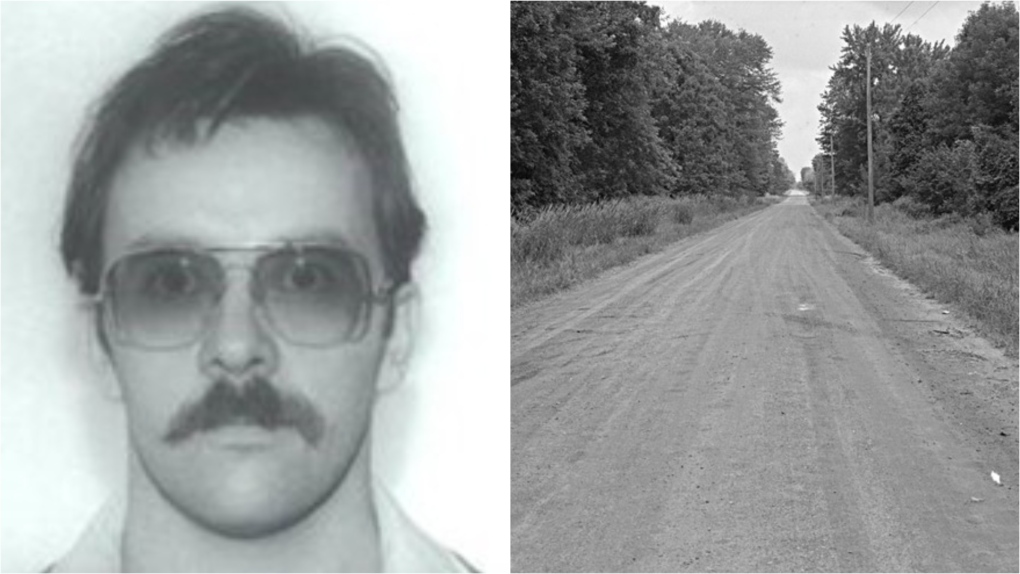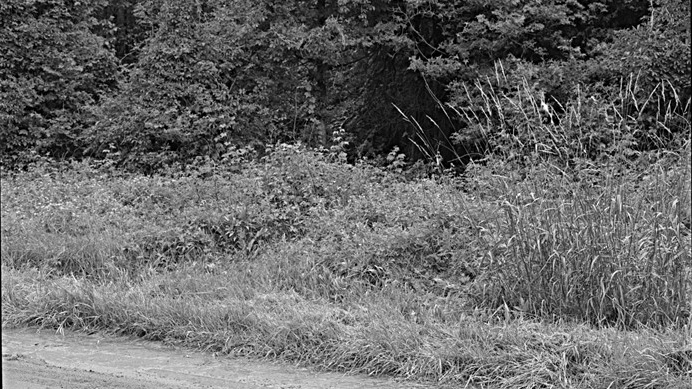Cold case that puzzled Toronto-area police for nearly half a century nearly cracked. Here's how they did it
 William Joseph Pennell is seen in this undated image. (York Regional Police)
William Joseph Pennell is seen in this undated image. (York Regional Police)
For nearly 45 years, the identity of the human remains found along a rural road north of Toronto remained a mystery.
It was on July 16, 1980, when a Markham, Ont. resident made the discovery near a wooded area on Eleventh Concession, between 14th and Steeles avenues. Unbeknownst to them, the remains belonged to William Joseph Pennell, a convict who had escaped a Kingston prison a month earlier.
York Regional Police previously announced that investigators had identified the remains in 2023 after the case stayed cold for decades. They said that investigative genetic genealogy (IGG) held the key to linking the body to Pennell after investigators positively identified his relatives.
But how did they do it? CTV News Toronto spoke with Othram, a Texas-based forensics company that assisted police in making the identification, to learn more about the process.
Collecting evidence
Pennell’s remains were first exhumed in 2007 by cold case investigators in an attempt to create a facial reconstruction and to obtain DNA, police said. A year later, a DNA profile was developed and uploaded to the national DNA database, but there were no matches.
Investigators then turned to IGG in 2021 and contacted Othram in The Woodlands, Texas in 2022 for help with the case.
“Othram received skeletal evidence, and the first thing that we need to do is we need to extract DNA from bone. And so we did that,” the company’s chief of staff, Colby Lasyone, told CTV News Toronto in an interview earlier this week.
Lasyone said the team then worked to develop a new DNA profile that York Regional Police used to upload into a database and cross reference with profiles on certain family tree websites before eventually finding a match.
“If you've done a genealogy test with a consumer genealogy testing company, you have to actually upload your DNA profile into a database. There are specific databases where law enforcement actually can query those databases. And so in order for forensic genetic genealogy to be done in a case, we can only match against databases where individuals have consented specifically for law enforcement to do so,” Lasyone explained.
 Human remains found by a Markham, Ont. resident on July 16, 1980 have been identified as William Joseph Pennell. (York Regional Police)
Human remains found by a Markham, Ont. resident on July 16, 1980 have been identified as William Joseph Pennell. (York Regional Police)
This isn’t the first time Othram has been involved in cracking a cold case in the Greater Toronto Area. In 2019, the company assisted Toronto police in identifying Joseph George Sutherland as a suspect in the 1983 killings of Erin Gilmour, the daughter of a wealthy Toronto businessman, and Susan Tice, a mother of four. Both women were killed inside their homes and both cases remained cold for nearly 40 years. Sutherland was sentenced to life in prison earlier this year.
“Genealogy was one time a hobby if you will, and then it was used to help locate adoptive families. And now, this application of genealogy, from a forensic perspective, allows for the identification of relatives that ultimately help to narrow down the name of individuals who have died without their identity being known, or even individuals who are suspects in a crime," Lasyone said.
'A huge benefit to police'
Chris Lewis is the former commissioner of the Ontario Provincial Police and said recent advancements in genetic genealogy for the purposes of solving cold cases mark a turning point in the way those cases are investigated.
“Years ago, in the 80s and 90s, in the early days of DNA, you had to have a sample from a crime scene, and then, of course, a sample from a suspect to try and match them in some way,” Lewis, who is CTV News’ Public Safety Analyst, said in an interview. He was not involved in the identification of Pennell’s remains.
“But now, you have the ability to identify people, unidentified human remains, etc, through this genetic approach and ultimately through a huge database that's been developed since,” Lewis said, calling the investigative tool “a huge benefit to police.”
 The wooded area in Markham, Ont. where William Joseph Pennell's remains were found on July 16, 1980, is seen in this image.
The wooded area in Markham, Ont. where William Joseph Pennell's remains were found on July 16, 1980, is seen in this image.
He said it’s likely cold cases will still exist, specifically in situations where no suspect or suspect DNA is identified at the scene. But in cases where police can make a forensic link to a person who was at the scene other than the victim or when human remains are unidentified, therein lies a big advantage for investigators.
“Police services all over Canada have been reviewing those old, so-called cold cases to see if the technology has developed to the point now that we can use it…and a lot of old, previously unsolved cases are being looked after because of the science.”
Who was William Joseph Pennell?
Pennell had spent time in several correctional institutions for a variety of criminal offences and was arrested for armed robbery and attempted murder on June 30, 1979, while out on parole, police said in a news release issued earlier this month.
After he was charged, Pennell was sent to the Collins Bay Institution in Kingston.
Police said Pennell admitted to his role in the crime and said there were at least two other people involved. However, he refused to implicate them as he believed his life was in danger.
Pennell was convicted of the robbery in April 1980. Two months later, he escaped from prison. To this date, no detailed records about the escape have been located.
While the details of his escape remain unclear, police said Pennell told a friend he intended to flee to South America. Police believe that was Pennell’s last contact before his death.
Pennell’s cause of death was never determined, but investigators believe foul play was involved.
The investigation into Pennell’s death is ongoing and police say they’re looking to speak with additional friends and associates of the 26-year-old to understand what happened following his 1980 prison escape.
CTVNews.ca Top Stories

Spirit Airlines files for bankruptcy as financial losses pile up and debt payments loom
Spirit Airlines said Monday that it has filed for bankruptcy protection and will attempt to reboot as it struggles to recover from the pandemic-caused swoon in travel and a failed attempt to sell the airline to JetBlue.
BREAKING Halifax police say Walmart employee’s death wasn’t suspicious; no other details released
Police in Halifax say the death of a Walmart employee who was found in a walk-in oven last month is not suspicious, but they are refusing to release any additional details.
Father, 2 children missing from northern B.C may be travelling to Alberta: RCMP
Mounties in B.C. are asking the public for help locating a father and his two children who have not been seen since Friday.
Trudeau says he could have acted faster on immigration changes, blames 'bad actors'
Prime Minister Justin Trudeau says the federal government could have acted faster on reining in immigration programs, after blaming 'bad actors' for gaming the system.
9 injured, including 2 critically, after stolen vehicle collides with TTC bus in Toronto: police
Nine people were injured, including two critically, after a stolen vehicle collided with a TTC bus in North York early Monday morning, Toronto police say.
Moscow warns U.S. over allowing Ukraine to hit Russian soil with long-range weapons
U.S. President Joe Biden's decision to let Ukraine strike targets inside Russia with U.S.-supplied long-range missiles was met with ominous warnings from Moscow, a hint of menace from Kyiv and nods of approval from some Western allies.
Ottawa family heartbroken after being scammed out of more than $22K on fake Taylor Swift tickets
A few weeks ago, they learned the tickets they booked last August were never real.
Two men accused in fatal border crossing to stand trial in Minnesota
Two men are to stand trial on human smuggling charges this week, almost three years after a family from India was found frozen to death on the border between Manitoba and Minnesota.
Australian senate censures Indigenous lawmaker who yelled at King Charles III
Australian senators on Monday voted to censure an Indigenous colleague who yelled at King Charles III during a reception in Parliament House last month.































